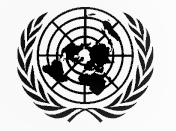29 August 2012 — On 29 August, a growing community of advocates for a safer world will observe the third annual International Day against Nuclear Tests across the globe. As a part of this community, United Nations staff worldwide will help to raise awareness of the day by organizing and supporting such activities as workshops, exhibits, and competitions.
At UN Headquarters, the day will be observed on 6 September in an informal meeting, convened by the President of the sixty-sixth session of the General Assembly, Mr. Nassir Abdelaziz Al-Nasser and organized in cooperation with the Permanent Mission of Kazakhstan. It will include a High Level Panel on the Role of the United Nations in Nuclear Disarmament and Non-Proliferation.
The observance will focus broadly on drawing the world’s attention to nuclear weapons abolition and the goal of a world free of nuclear weapons. Secretary-General Ban Ki-moon and the President of the General Assembly will deliver opening remarks.
The International Day against Nuclear Tests, established by General Assembly resolution 64/35, then presented at the initiative of the President of Kazakhstan, was first observed in 2010. The date, 29 August, marks the day in 1991 when Semipalatinsk, one of the largest test sites in the world was closed permanently.
The Day aims to promote the idea that “every effort should be made to end nuclear tests in order to avert devastating and harmful effects on the lives of people… and, that the end of nuclear tests is one of the key means of achieving the goal of a nuclear-weapon-free world.”
The Nuclear Age began in July 1945 when the first atomic bomb was launched in Alamogordo, New Mexico. The detrimental effects to humans and the environment became evident with further testing around the world. Since then, the cause has been increasingly taken up by many concerned individuals and groups around the world. As a result, the community of advocates against nuclear tests has included United Nations and Member States, intergovernmental and non-governmental organisation, academic institutions as well as youth networks. Today, with nuclear weapons even more potent – 2,500 times so – the issue is even more relevant.
The key mechanism for prohibiting weapons testing is the Comprehensive Nuclear-Test-Ban Treaty (CTBT). It was opened for signature in 1996, but has yet to enter into force. Throughout the year, events are expected to be held around the world at universities, academic institutions, schools and youth organizations.
See Also:
This article was adapted from a piece originally written by the United Nations Department of Public Information and published to the UN’s Iseek intranet website.


